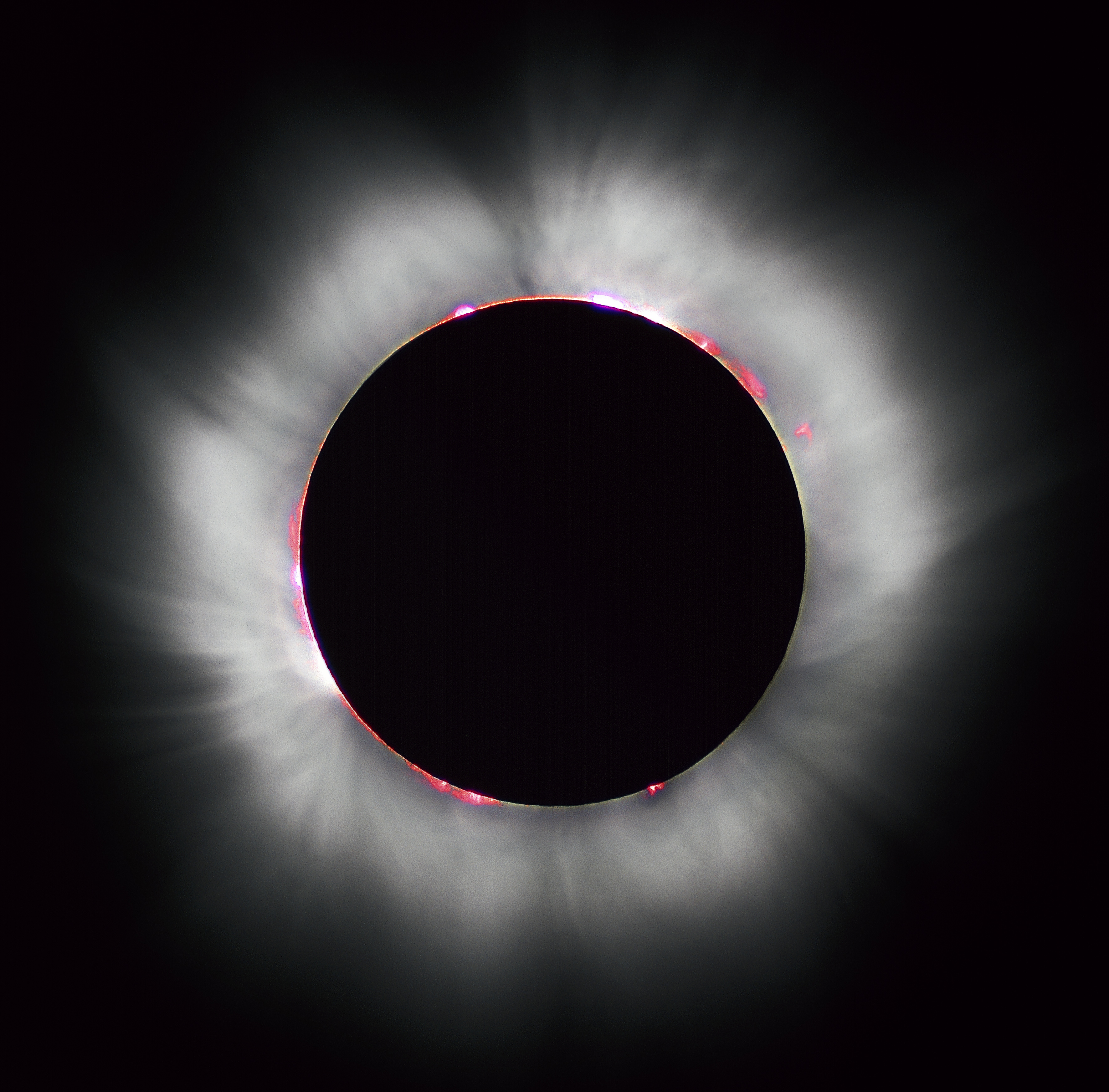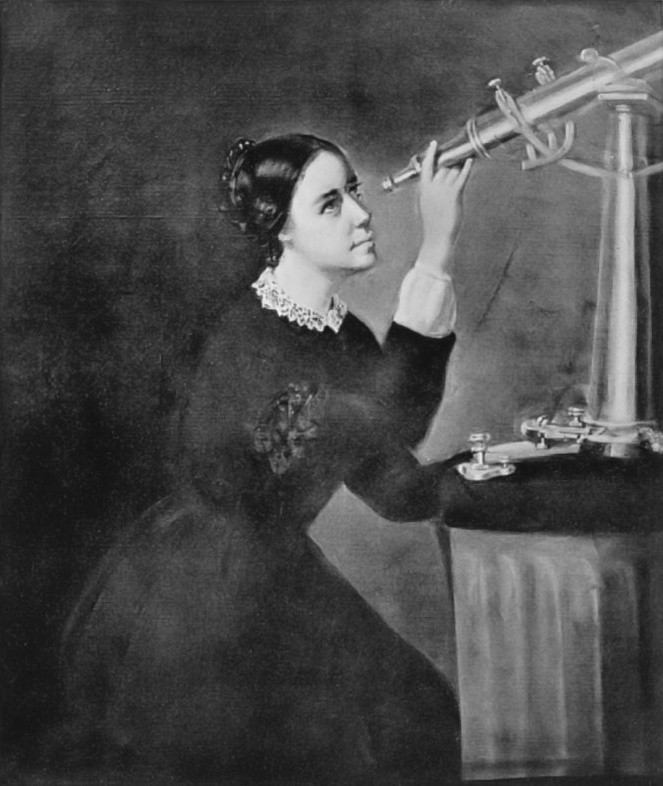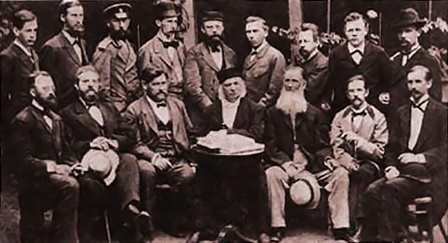|
Yevgenia Bugoslavskaya
Yevgenia Yakovlevna Bugoslavskaya (21 December 1899 – 30 May 1960) was a Soviet astronomer. She had a lifelong career in astronomy and became professor of astronomy at Moscow University. Alternative spelling of her name, Evgeniia Iakovlevna Bugoslavskaia. Life Bugoslavskaya was born in Moscow. She grew up in the Moscow suburbs and had an early enthusiasm for astronomy. As teenagers she and her twin sister Natalia paid many visits to the observatory of the Moscow Society of Folk Universities located in the Lubjanca district which was open to the public as part of an educational programme. She was also a recreational pianist and singer. In 1924 she graduated from Moscow State University . In 1925–1928 she undertook postgraduate studies at the Astronomical and Geodetic Institute at Moscow State University. In 1928–1932 she worked in the geodetic institute, and from 1932 at the Sternberg Astronomical Institute (SAI). Beginning in 1934 she taught at Moscow St ... [...More Info...] [...Related Items...] OR: [Wikipedia] [Google] [Baidu] |
Moscow State University
M. V. Lomonosov Moscow State University (MSU; russian: Московский государственный университет имени М. В. Ломоносова) is a public research university in Moscow, Russia and the most prestigious university in the country. The university includes 15 research institutes, 43 faculties, more than 300 departments, and six branches (including five foreign ones in the Commonwealth of Independent States countries). Alumni of the university include past leaders of the Soviet Union and other governments. As of 2019, 13 List of Nobel laureates, Nobel laureates, six Fields Medal winners, and one Turing Award winner had been affiliated with the university. The university was ranked 18th by ''The Three University Missions Ranking'' in 2022, and 76th by the ''QS World University Rankings'' in 2022, #293 in the world by the global ''Times Higher World University Rankings'', and #326 by ''U.S. News & World Report'' in 2022. It was the highest-ran ... [...More Info...] [...Related Items...] OR: [Wikipedia] [Google] [Baidu] |
Solar Eclipse
A solar eclipse occurs when the Moon passes between Earth and the Sun, thereby obscuring the view of the Sun from a small part of the Earth, totally or partially. Such an alignment occurs during an eclipse season, approximately every six months, during the new moon phase, when the Moon's orbital plane is closest to the plane of the Earth's orbit. In a total eclipse, the disk of the Sun is fully obscured by the Moon. In partial and annular eclipses, only part of the Sun is obscured. Unlike a lunar eclipse, which may be viewed from anywhere on the night side of Earth, a solar eclipse can only be viewed from a relatively small area of the world. As such, although total solar eclipses occur somewhere on Earth every 18 months on average, they recur at any given place only once every 360 to 410 years. If the Moon were in a perfectly circular orbit and in the same orbital plane as Earth, there would be total solar eclipses once a month, at every new moon. Instead, because the Moon ... [...More Info...] [...Related Items...] OR: [Wikipedia] [Google] [Baidu] |
Moscow State University Alumni
Moscow ( , US chiefly ; rus, links=no, Москва, r=Moskva, p=mɐskˈva, a=Москва.ogg) is the capital and largest city of Russia. The city stands on the Moskva River in Central Russia, with a population estimated at 13.0 million residents within the city limits, over 17 million residents in the urban area, and over 21.5 million residents in the metropolitan area. The city covers an area of , while the urban area covers , and the metropolitan area covers over . Moscow is among the world's largest cities; being the most populous city entirely in Europe, the largest urban and metropolitan area in Europe, and the largest city by land area on the European continent. First documented in 1147, Moscow grew to become a prosperous and powerful city that served as the capital of the Grand Duchy that bears its name. When the Grand Duchy of Moscow evolved into the Tsardom of Russia, Moscow remained the political and economic center for most of the Tsardom's history. When th ... [...More Info...] [...Related Items...] OR: [Wikipedia] [Google] [Baidu] |
1960 Deaths
Year 196 ( CXCVI) was a leap year starting on Thursday (link will display the full calendar) of the Julian calendar. At the time, it was known as the Year of the Consulship of Dexter and Messalla (or, less frequently, year 949 ''Ab urbe condita''). The denomination 196 for this year has been used since the early medieval period, when the Anno Domini calendar era became the prevalent method in Europe for naming years. Events By place Roman Empire * Emperor Septimius Severus attempts to assassinate Clodius Albinus but fails, causing Albinus to retaliate militarily. * Emperor Septimius Severus captures and sacks Byzantium; the city is rebuilt and regains its previous prosperity. * In order to assure the support of the Roman legion in Germany on his march to Rome, Clodius Albinus is declared Augustus by his army while crossing Gaul. * Hadrian's wall in Britain is partially destroyed. China * First year of the '' Jian'an era of the Chinese Han Dynasty. * Emperor Xian o ... [...More Info...] [...Related Items...] OR: [Wikipedia] [Google] [Baidu] |
1899 Births
Events January 1899 * January 1 ** Spanish rule ends in Cuba, concluding 400 years of the Spanish Empire in the Americas. ** Queens and Staten Island become administratively part of New York City. * January 2 – **Bolivia sets up a customs office in Puerto Alonso, leading to the Brazilian settlers there to declare the Republic of Acre in a revolt against Bolivian authorities. **The first part of the Jakarta Kota–Anyer Kidul railway on the island of Java is opened between Batavia Zuid ( Jakarta Kota) and Tangerang. * January 3 – Hungarian Prime Minister Dezső Bánffy fights an inconclusive duel with his bitter enemy in parliament, Horánszky Nándor. * January 4 – **U.S. President William McKinley's declaration of December 21, 1898, proclaiming a policy of benevolent assimilation of the Philippines as a United States territory, is announced in Manila by the U.S. commander, General Elwell Otis, and angers independence activists who had fought against ... [...More Info...] [...Related Items...] OR: [Wikipedia] [Google] [Baidu] |
Soviet Academics
The Soviet Union,. officially the Union of Soviet Socialist Republics. (USSR),. was a transcontinental country that spanned much of Eurasia from 1922 to 1991. A flagship communist state, it was nominally a federal union of fifteen national republics; in practice, both its government and its economy were highly centralized until its final years. It was a one-party state governed by the Communist Party of the Soviet Union, with the city of Moscow serving as its capital as well as that of its largest and most populous republic: the Russian SFSR. Other major cities included Leningrad (Russian SFSR), Kiev (Ukrainian SSR), Minsk (Byelorussian SSR), Tashkent (Uzbek SSR), Alma-Ata (Kazakh SSR), and Novosibirsk (Russian SFSR). It was the largest country in the world, covering over and spanning eleven time zones. The country's roots lay in the October Revolution of 1917, when the Bolsheviks, under the leadership of Vladimir Lenin, overthrew the Russian Provisional Government tha ... [...More Info...] [...Related Items...] OR: [Wikipedia] [Google] [Baidu] |
Women Astronomers
The following is a list of astronomers, astrophysicists and other notable women who have made contributions to the field of astronomy. __NOTOC__ A * Madge Adam (1912–2001), English solar astronomer * Maggie Aderin-Pocock (born 1968), English space scientist * Conny Aerts (born 1966), Belgian astrophysicist specializing in asteroseismology * Aglaonike (c. 1st or 2nd Century BCE), ancient Greek astronomer and thaumaturge * María Luisa Aguilar Hurtado (1938–2015), Peruvian astronomer * Eva Ahnert-Rohlfs (1912–1954), German variable star astronomer * Elizabeth Alexander (1908–1958), English geologist and physicist * Leah Allen (1884–1973), American astronomer and educator * Adelaide Ames (1900 - 1932), American astronomer * Anja Cetti Andersen (born 1965), Danish astronomer focused on cosmic dust * Necia H. Apfel (born 1930), American astronomer and educator * Alice Archenhold (1874–1943), German astronomer * Anne Archibald, Canadian astronomer and educator B ... [...More Info...] [...Related Items...] OR: [Wikipedia] [Google] [Baidu] |
Soviet Astronomers
This list of Russian astronomers and astrophysicists includes the famous astronomers, astrophysicists and cosmologists from the Russian Empire, the Soviet Union and the Russian Federation. Alphabetical list __NOTOC__ A *Tateos Agekian, one of the pioneers of Russian and world Stellar dynamics, discoverer of two evolutionary sequences of stellar systems: nearly spherical and strongly flattened *Vladimir Albitsky, discovered a significant number of asteroids *Viktor Ambartsumian, one of the founders of theoretical astrophysics, discoverer of stellar associations, founder of Byurakan Observatory in Armenia *Andrejs Auzāns, director of the Tashkent observatory, 1911-1916 B *Nikolai P. Barabashov, co-author of the ground breaking publication of the first pictures of the far side of the Moon in 1961, called ''Atlas of the Other Side of the Moon''; a crater and a planet were named after him *Vladimir Belinski, an author of the BKL singularity model of the Universe evolution *Igor ... [...More Info...] [...Related Items...] OR: [Wikipedia] [Google] [Baidu] |
Planet Venus
Venus is the second planet from the Sun. It is sometimes called Earth's "sister" or "twin" planet as it is almost as large and has a similar composition. As an interior planet to Earth, Venus (like Mercury) appears in Earth's sky never far from the Sun, either as morning star or evening star. Aside from the Sun and Moon, Venus is the brightest natural object in Earth's sky, capable of casting visible shadows on Earth at dark conditions and being visible to the naked eye in broad daylight. Venus is the second largest terrestrial object of the Solar System. It has a surface gravity slightly lower than on Earth and has a very weak induced magnetosphere. The atmosphere of Venus, mainly consists of carbon dioxide, and is the densest and hottest of the four terrestrial planets at the surface. With an atmospheric pressure at the planet's surface of about 92 times the sea level pressure of Earth and a mean temperature of , the carbon dioxide gas at Venus's surface is in the s ... [...More Info...] [...Related Items...] OR: [Wikipedia] [Google] [Baidu] |
List Of Craters On Venus
This is a list of craters on Venus, named by the International Astronomical Union's (IAU) Working Group for Planetary System Nomenclature. All craters on Venus are named after famous women or female first names. ''(For features on Venus other than craters see, list of montes on Venus and List of coronae on Venus.)'' As of 2017, there are 900 named craters on Venus, fewer than the lunar and Martian craters but more than on Mercury. Other, non-planetary bodies with numerous named craters include Callisto ( 141), Ganymede ( 131), Rhea (128), Vesta (90), Ceres (90), Dione (73), Iapetus (58), Enceladus (53), Tethys (50) and Europa ( 41). For a full list, ''see List of craters in the Solar System''. A back to top B back to top C back to top D back to top E back to top F back to top G back to top H back to top I back to top J back to top K back to top L back to top M back to top N back to t ... [...More Info...] [...Related Items...] OR: [Wikipedia] [Google] [Baidu] |
Lenin Hills
Sparrow Hills (russian: :ru:Воробьёвы горы, Воробьёвы го́ры, ), formerly known as Lenin Hills (, ) between 1935 and 1999, is a hill on the right bank of the Moskva River and one of the highest points in Moscow, reaching a height of above the river level. The observation platform, which gives a good panoramic view of the city, is on a steep bank above the river, or above sea level. The Luzhniki Stadium (formerly the Lenin Stadium), where the opening and closing ceremonies for the 1980 Summer Olympics took place, is right below, across the Moskva River. Next to it is the Novodevichy Convent, with its Naryshkin Baroque towers. Not far from the observation platform is the Luzhniki Metro Bridge. The two-level Metro-Bridge traverses the river to link Komsomolsky Prospekt with Vernadsky Prospekt. It serves two urban transport systems: motor vehicles and the Moscow Metro subway. The glass-walled subway station ''Vorobyovy Gory (Moscow Metro), Vorobyovy Gor ... [...More Info...] [...Related Items...] OR: [Wikipedia] [Google] [Baidu] |
Solar Eclipse Of June 30, 1954
A total solar eclipse occurred at the Moon's descending node of the orbit on June 30, 1954. A solar eclipse occurs when the Moon passes between Earth and the Sun, thereby totally or partly obscuring the image of the Sun for a viewer on Earth. A total solar eclipse occurs when the Moon's apparent diameter is larger than the Sun's, blocking all direct sunlight, turning day into darkness. Totality occurs in a narrow path across Earth's surface, with the partial solar eclipse visible over a surrounding region thousands of kilometres wide. Occurring only 3.1 days after perigee (Perigee on June 27, 1954), the Moon's apparent diameter was larger. Totality lasted 2 minutes and 34.93 seconds, but at sunrise 1 minute and 8.6 seconds and at sunset 1 minute and 5.3 seconds. The moon's apparent diameter was larger, 1930.2 arc-seconds. Visibility Totality began at sunrise over the United States over Nebraska, South Dakota, Minnesota, and Wisconsin, and crossed into Canada, across southern Gr ... [...More Info...] [...Related Items...] OR: [Wikipedia] [Google] [Baidu] |







